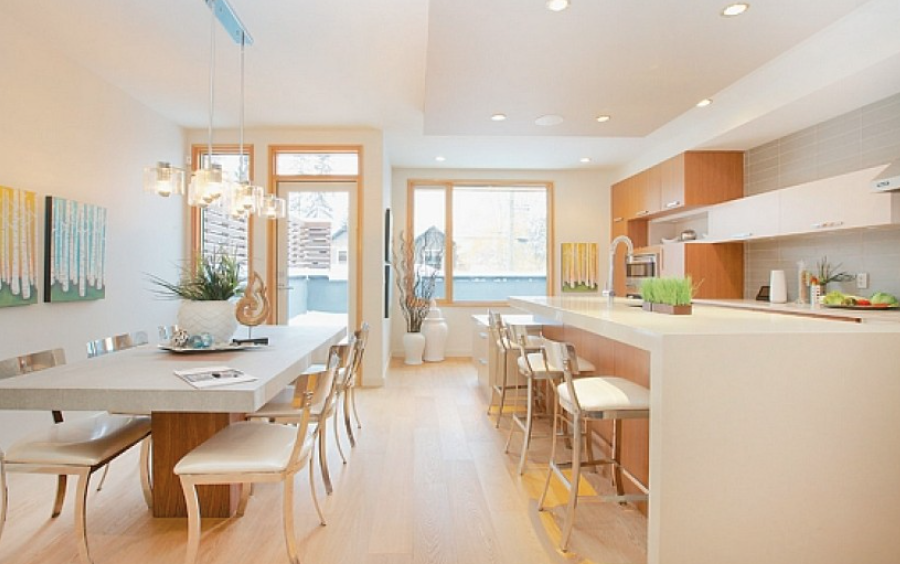The best dining table will be one that’s within your budget, is well built, fits in your space, and has a style that you’ll enjoy for a long time.
Aside from affordable pricing and classic designs, stability and construction are also important considerations when shopping for tables. Consider whether the tables are comfortable to sit at and how long they will last. Inspect the tables for scratches and nicks for clues as to how well they will withstand heavy use at home. Your decision will be based on your personal preference and the tables’ likely longevity at home.
Before cracking open your wallet, be sure to check these additional points.
Use your measuring tape to make sure it fits
Since dining tables are large pieces of furniture, you must make sure that they fit well in your dining room. You also must look for a piece that can easily pass through your doors.
Additionally, you need at least three feet of breathing room around the table as well as around the chair so that you can comfortably move around. To determine the right size dining table for your space, start with measuring the area that can be used for dining and subtract about six feet from that measurement to obtain the target dining table dimensions.
If you are planning on buying a bigger piece of furniture, take the time to mark out the length and width of the piece on the floor, as well as the height. What works best for us is filling the space inside the tape corners with smaller pieces of furniture like chairs and then checking if space would be right for a dining table. You can also use a friend to hold a tape measure while you take measurements.
Choose a shape that meets your needs
The most common tables are square and rectangle, so you have a much wider selection of styles, sizes, and extendable options there. You can make the most of your space with a round or oval table since it eliminates corners but still offers a good surface area.
Since round or oval tables are flat on one side, they lend themselves well to parties and conversations.
Be aware of the table support
In general, leg bases or pedestal bases are commonly used for tables. You need to make sure there aren’t any supports in the legs that will encroach onto your leg space.
Sit at the table and see if your legs are coming into contact with its legs when you see it in person.
Ensure that your knees will have enough room on either side of the table and that you can cross your legs underneath the table when you scoot all the way in. Your maneuverability is limited by the tabletop apron, which supports the tabletop.
Select table materials that fit your style
It can be challenging to choose the right material for a dining table. A table’s price, ease of care, and design should all be considered to make the right choice. Tables that don’t meet any of those criteria might be a mistake you regret later. Here are some common materials, and what to consider:
Wood: Solid wood is a classic material that stands the test of time and even if damaged, it is easy to repair.
Veneer/Wood-Look: In many cases, wood veneer can be an adequate alternative to solid wood.
Stone and Stone-Look: There are several stone tabletops, including marble, quartz composite, and cast stone—all of which have a porous appearance that lets them easily absorb stains.
Glass: Glass tabletop options include clear, frosted, and tinted versions; they’re relatively inexpensive and can create an air of spaciousness and openness.

